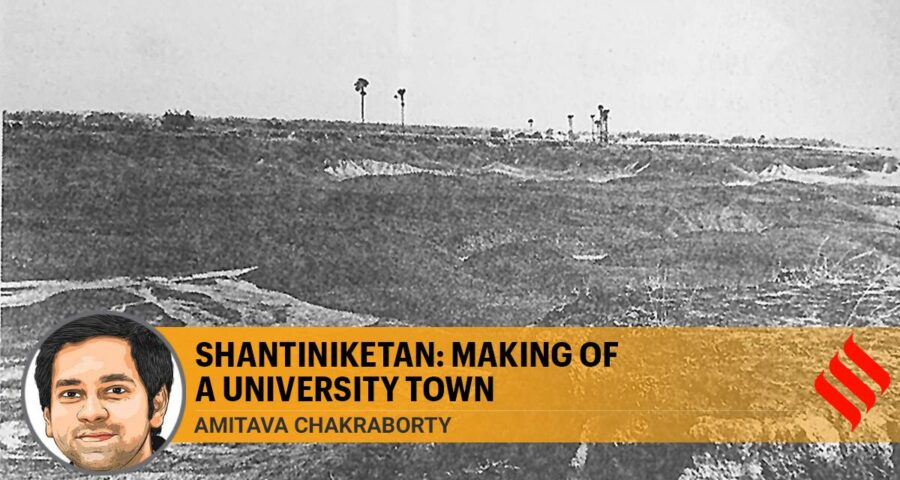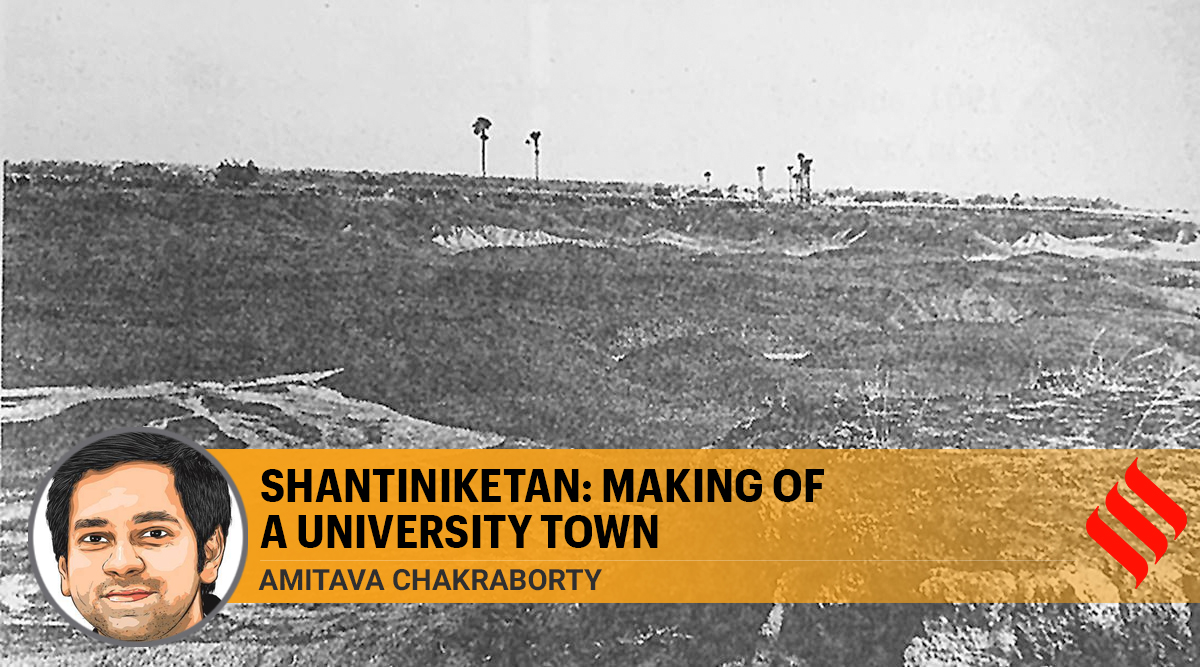In the heated political battlefield of West Bengal ahead of the Assembly election, set to be a bitter contest between the ruling Trinamool and the BJP, both Poush Mela and the land row are seen to be motivated.
It was in 1863 that Maharshi Debendranath Thakur, the father of Rabindranath Tagore, purchased 20 bighas of land at Bhubandanga in Bengal’s Birbhum province. Over the next few years, he built there an ashram called Shantiniketan (the abode of peace), where anyone, irrespective of caste and creed, could meditate about the formless supreme god, a central tenet of the Brahmo Samaj ideology that he followed.
In 1901, Tagore would set up on this land the Shantiniketan Brahmacharya Ashram, with five students. These included his eldest son Rathindranath Thakur and Khitimohan Sen, the maternal grandfather of Nobel laureate Amartya Sen, who now finds himself in a dispute over ownership of land there.
In the years that followed, the ashram area would grow manifold, with 1921 seeing the setting up of Visva-Bharati, for the study of different cultures, on its premises. Shantiniketan would gradually become a university town, drawing illustrious alumni from Indira Gandhi to Maharani Gayatri Devi, and get the formal stamp of a central university in 1951.
“Tagore wanted scholars and prominent people to reside in Shantiniketan to spread his ideology. The process of giving houses or leasing out land was started by him through the Shantiniketan Ashramic Trust. However, it was informal in nature. The formal leasing of land was started by Visva-Bharati in 1948 and continued until the 1960s,” says Dhrubajyoti Nandi, an author based in Shantiniketan.
In Towards Tagore, a collection of essays, Abhijit Sen, a professor at Visva-Bharati University, says the poet wanted to provide an alternative to the colonial style of education through the ashram. “While he (Rabindranath) had not entirely shed his regard for the ‘Great English’…, he was also caught up by the wave of nationalist/anti-colonialist ideology,” Sen writes.
Tagore’s love for nature shaped the way teaching was done at the ashram-school, as he himself underlined in an essay My School published in 1913. “I believe that children should be surrounded with the things of nature, which have their own educational value… But what happens in school is, that every day, at the same hour, the same book is brought and poured out for him,” he wrote. Classes at Visva-Bharati continue to be held in the open on the campus, in line with that spirit.
Barnali Ghoshdastidar, who was born and educated in Shantiniketan and is related to the Sinha family of Birbhum that owned the land which Tagore’s father bought, says, “During my childhood, there were only few boundary walls. For Gurudev (Tagore), education was to be imparted in harmony with nature.” Ghoshdastidar is a professor at Narasinha Dutt College in Howrah.
As Tagore’s fame spread, with his writings winning him the Nobel Prize for Literature in 1913, Shantiniketan drew scholars and prominent personalities from across the world, who came both to teach and experience the ashram life. “He turned Shantiniketan into a cosmopolitan university town. Renowned scholars visited Visva-Bharati regularly. He would often lease land to them in Shantiniketan so that they could help him develop the ashram,” says Monisha Bannerjee, an alumna of Visva-Bharati.
Tagore also made the celebration of the annual Poush Mela, started by his father in 1894, a tradition. The fair is held over three days in December, concluding with Christo Utsab (celebration of Christ) on December 26. Says sculptor and painter Asis Ghosh, who has worked in Shantiniketan for nearly four decades, “The Mela was an assimilation ground for cultures. Bauls, Sufis, Santhals, all came together. This helped tribal artisans get the opportunity to promote their products.”
Last month, the Poush Mela could not be held. While the official reason was Covid-19, in the heated political battlefield of West Bengal ahead of the Assembly election, set to be a bitter contest between the ruling Trinamool and the BJP, both that and the land row are seen to be motivated.
On December 24, Visva-Bharati wrote to the West Bengal government alleging that 77 plots of land on the Shantiniketan premises over the years had been wrongly recorded in the name of private parties. One of the parties named was Amartya Sen, a critic of the BJP government whose family home Pratichi continues to be located on the university campus. Sen has said the long-term lease of the land is “nowhere near its expiry”. Chief Minister Mamata Banerjee has accused the BJP of “levelling baseless allegations”, and written to Sen in solidarity, underlining his family’s “deep bond with Shantiniketan”.
Professor Ghoshdastidar sees the row as a product of the political tussle in the state. “Gurudev always visualised Visva-Bharati to be a family. What we are witnessing in Shantiniketan is an ugly fight between ideologies. This is not a problem of land encroachment. And if land ownership is the principal issue, the Maharshi did not acquire the amount of land that the institution owned even in its early days (the land deals mostly being informal). Would you then call Debendranath Thakur and Rabindranath Thakur to court?”
This article first appeared in the print edition on January 10, 2020 under the title ‘Shantiniketan: Making of a university town’.
Source: Read Full Article


